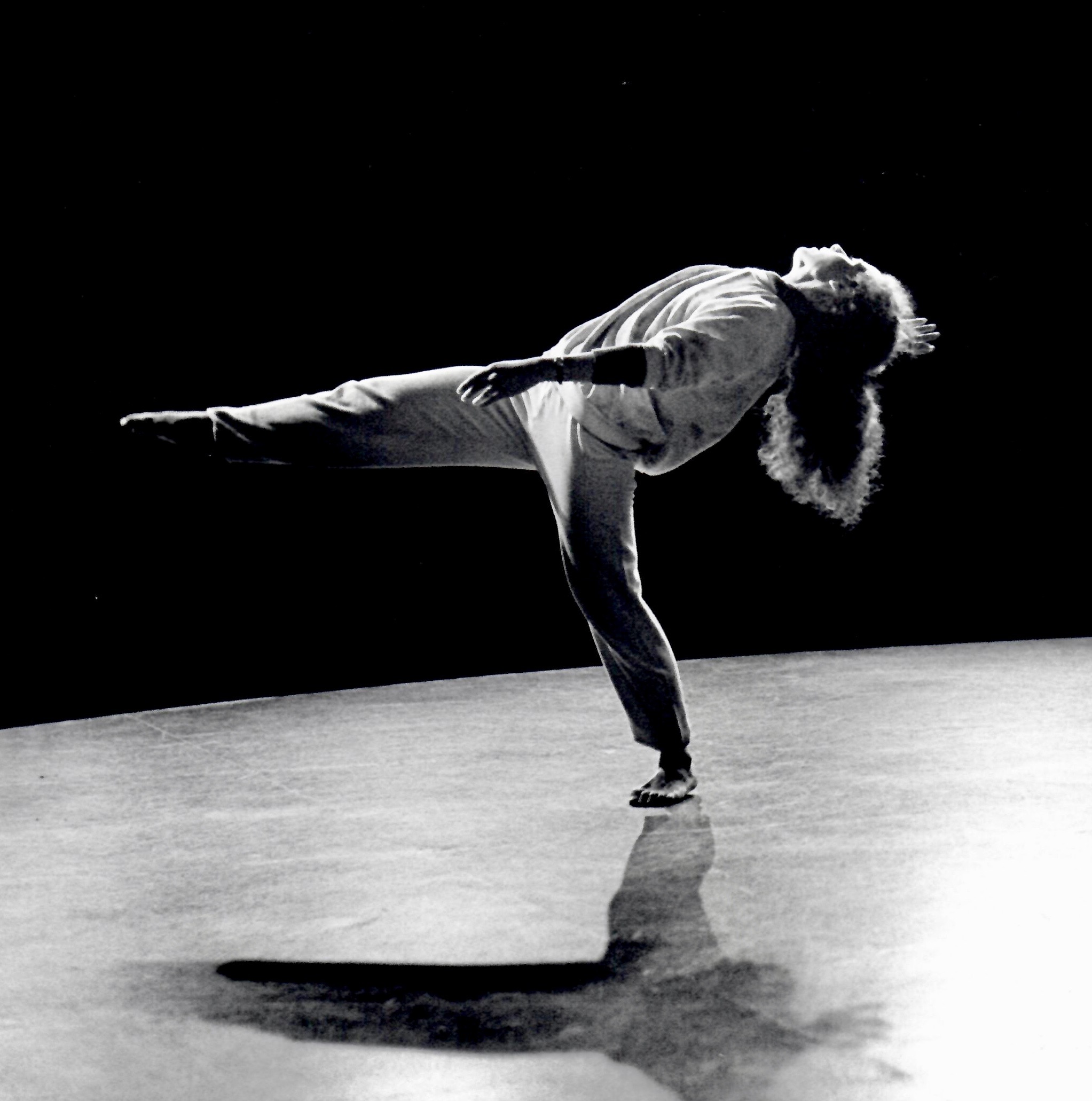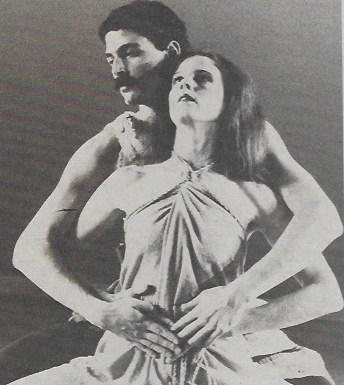This was not my first trip to Israel. For my 50th birthday Murray and I traveled to Israel, staying first with friends at Kibbutz Lotan located in the South and then taking a small minivan tour of the country for about a week. While it was a very positive experience and I especially liked Tel Aviv and have vivid memories of watching large groups of people gathering by the beach to folk dance on Shabbat, I did find not myself in a hurry to return. As I flew into Israel on Friday morning to begin this nine-day trip with five workshops scheduled I wondered how my work would be received particularly among traditional orthodox Jewish participants. The five workshops were scheduled throughout the country and I had no idea who the attendees would be.
I am very glad to have written about the trip, shortly after it happened, in an Avodah Newsletter, and the majority of this blog comes from the newsletter. As was my regular practice when leading dance midrash workshops, they were always based on that week’s Torah portion and I had a particularly rich and easy one to work with. I decided to focus on two specific lines in the portion “Lech Lecha”: Genesis 12:1, “The Lord said to Abram, ”Go forth from your native land and from your father’s house to the land that I will show you,” and Genesis 16: 1-16 where Hagar bears a child for Sarah.
Arriving in Israel on Friday I would have Saturday to spend with friends who offered a place to stay where they lived on Kibbutz Tzora. They had originally lived at Kibbutz Lotan, where Murray and I had visited them six years ago. Now, along with two adorable twins, they lived on Kibbutz Tzora which had a much more urban feeling than Lotan. I was also able to use time to review the Torah portion I would be working with. Even though I had worked with many Torah portions many times I often found new insight depending on my life events and world happenings. This particular week I decided to address the question of what quality in Abram triggered God to select him to “go forth.”
For the section on Sarah and Hagar, I decided to find moments of interaction between them that are not described in text, such as what Sarah might have said to Hagar to convince her to bear a child for her, or what Hagar might have said to Sarah when Hagar knew she was pregnant. In other words, I wanted to make the relationship very real between these two women.
All five workshops were built from these two scenarios, and each workshop had the same outline: movement warm-up, introduction of ritual movement (i.e. movement already existing in our tradition, such as putting on a tallit or bending and bowing), exploration of text in movement, questions, and feedback. Each workshop took on its own character and emphasis based on the participants, and there was a huge range!
As I reviewed my write-up in the Avodah Newsletter I noted that I only mentioned four workshops. Actually a fifth one stands out in my mind and I hunch that I decided not to write about it for the newsletter. For this blog I will just share one very strong memory of that workshop (the first), which I led in Jerusalem. I remember my friends driving to and from the location, and that I felt a huge relief to be leaving Jerusalem, as I felt the energy from both the workshop and in the streets to have been somewhat frantic!!
While each workshop had the same outline, each one definitely had its own character and emphasis based on the participants. The second workshop, in Tel Aviv, like the one in Jerusalem, was attended by all non-dancers and thus my main job was in motivating movement and leading the group to be comfortable with movement as a way to explore text.
The third workshop was in the city of Beit She’an which is located in the northern part of Israel in the Jordan Valley. It was held in a beautiful dance studio, part of the region’s cultural center, and had the highest level of dance participants, with several professional dancers and advanced dance students. I also seem to remember this was the home community of Elisabeth, the person who had visited my dance midrash class in New York City and arranged for me to come. A single sentence was enough to motivate rich movement, and sophisticated improvisational dance challenges quickly became an important part of this workshop. A particularly memorable improvisation occurred on the letters in God’s name (yud, hay, vav, hay). I taught a simple movement phrase based on a meditation related to these letters and then asked the participants each to think about her own God image and to incorporate that in her improvisation. The intensity in the room was incredible and while I was dancing with the group I sensed an extraordinary energy happening, with amazing movement interactions taking place in my own improvising. One person had chosen to observe and was mesmerized by what she saw. Not surprisingly, in the feedback section, this exercise was commented on the most. From an orthodox woman came the statement that she was apprehensive when asked to do this activity but found it profound. A secular woman also shared the same reaction – an initial reluctance to dance the letters in God’s name, but then a discovery of great meaning to the exercise. I felt a certain affirmation in having been able to provide such an experience for women coming from such different backgrounds.
From there I traveled to Yeroham which is in the Southern District – Negev Desert. The workshop was held in the Bamidbar Creative Beit Midrash which had been built in 1990 following the assassination of Prime Minister Rabin, and which serves the local community as well as visitors. It is also an unusual space in that it has served as a bomb shelter. Put to happier use, all the furniture had been removed for our dance workshop, and there was also an art exhibit by oil painter Anna Andersch-Marcus, a world-renowned artist living in Yeroham. This was the only time my teaching in English created a few moments of tension, when some debate arose about how to translate what I said. Luckily several bilingual participants were able to assure the group that the differences were insignificant to the assignment, and the 15 women ranging in background from secular to traditional worked together sharing nonverbally our interpretations of biblical text.
My own improvisations that day were influenced by the fact that we were near a site called Hagar’s Well and I was reminded of the challenges that the environment presents. It made a big difference in my own movement to keep the harshness of the desert landscape in mind as I danced interactions between Sarah and Hagar.
The final workshop was at Kibbutz Lotan. The Kibbutz was further south located in the heart of the desert about 40 minutes north of Elat which is on the Red Sea. I had very pleasant memories of the Kibbutz from my earlier trip to Israel. The reform Kibbutz had developed further with bird-watching trails, sand dunes and the intimacy of a small lush Kibbutz surrounded by the barren desert mountains. I thoroughly enjoyed being there and even discussed with the leadership of the Kibbutz the possibility of doing an intensive five-day workshop to train dance midrash specialists as well as individuals who just wanted to explore text through dance stimulated by the beautiful desert environment and guest facilities of the Kibbutz. I never put much energy into organizing it and so it never happened. Being at Kibbutz Lotan was a wonderful way to end a very full nine days and return to Italy to continue getting ready for our October 31 concert.

[print_link]





















